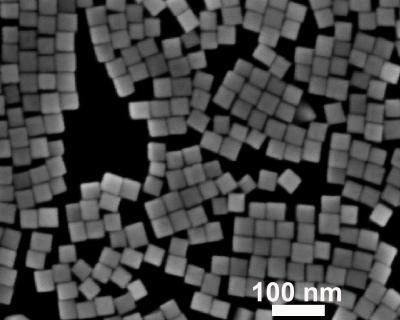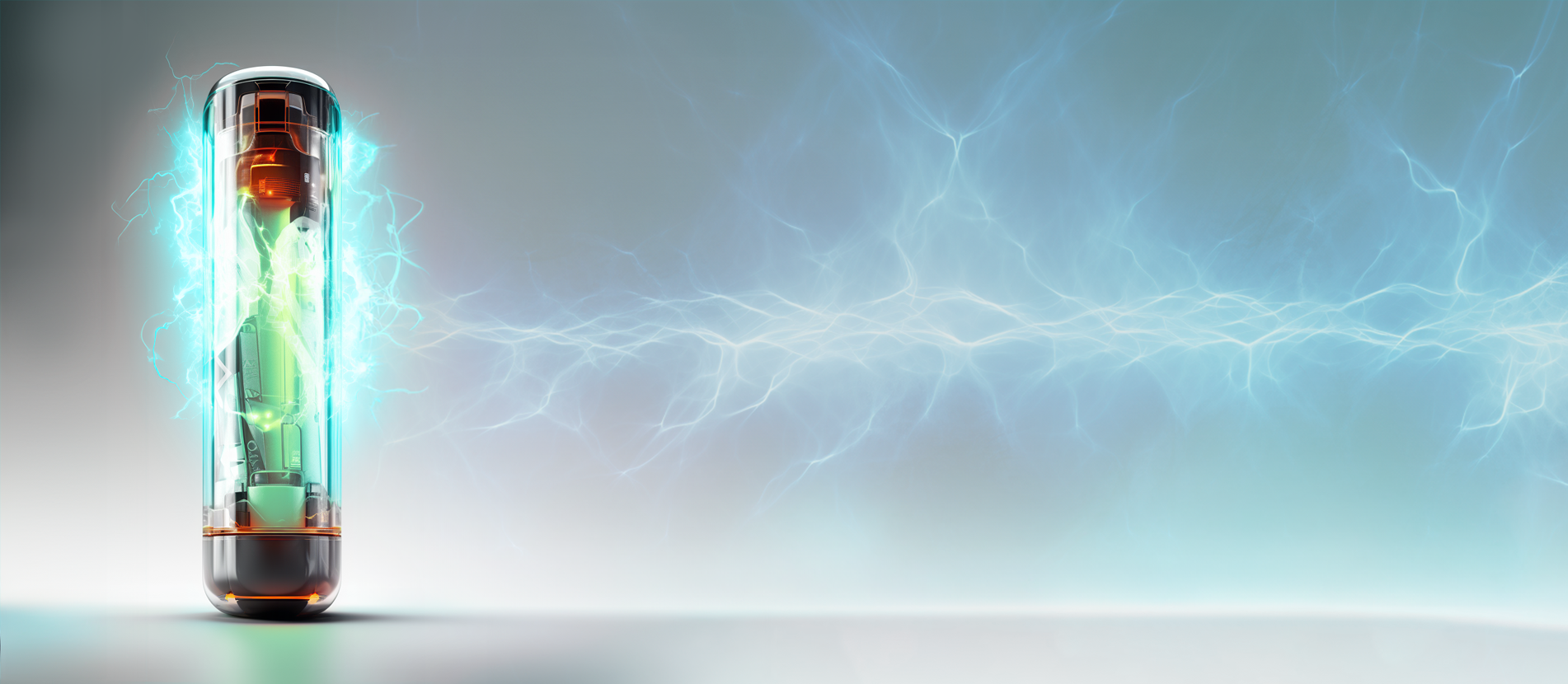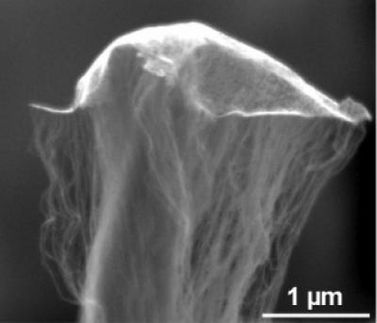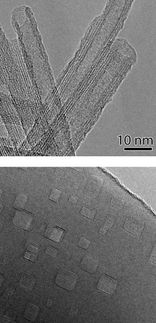Size matters in nanocrystals' ability to adsorb gases
More efficient catalytic converters on autos, improved batteries and more sensitive gas sensors are some of the potential benefits of a new system that can directly measure the manner in which nanocrystals adsorb and release hydrogen and other gases.

These are palladium nanocrystals.
Bardhan Laboratory
The technique, which was developed by Vanderbilt University Assistant Professor of Chemical and Biomolecular Engineering Rizia Bardhan, is described in a paper published online by the journal Nature Materials.
In the last 30 years, there has been a tremendous amount of research studying nanocrystals – tiny crystals sized between one to 100 nanometers in size (a nanometer is to an inch what an inch is to 400 miles) – because of the expectation that they have unique physical and chemical properties that can be used in a broad range of applications.
One class of applications depends on nanocrystals' ability to grab specific molecules and particles out the air, hold on to them and then release them: a process called adsorption and desorption. Progress in this area has been hindered by limitations in existing methods for measuring the physical and chemical changes that take place in individual nanocrystals during the process. As a result, advances have been achieved by trial-and-error and have been limited to engineered samples and specific geometries.
"Our technique is simple, direct and uses off-the shelf instruments so other researchers should have no difficulty using it," said Bardhan. Collaborators in the development were Vanderbilt Assistant Professor of Mechanical Engineering Cary Pint, Ali Javey from the University of California, Berkeley and Lester Hedges, Stephen Whitelam and Jeffrey Urban from the Lawrence Berkeley National Laboratory.
The method is based on a standard procedure called fluorescence spectroscopy. A laser beam is focused on the target nanocrystals, causing them to fluoresce. As the nanocrystals adsorb the gas molecules, the strength of their fluorescent dims and as they release the gas molecules, it recovers.
"The fluorescence effect is very subtle and very sensitive to differences in nanocrystal size," she explained. "To see it you must use nanocrystals that are uniform in size." That is one reason why the effect wasn't observed before: Fabrication techniques such as ball milling and other wet-chemical approaches that have been widely used produce nanocrystals in a range of different sizes. These differences are enough to mask the effect.
To test their technique, the researchers studied hydrogen gas sensing with nanocrystals made out of palladium. They choose palladium because it is very stable and it readily releases adsorbed hydrogen. They used hydrogen because of the interest in using it as a replacement for gasoline. One of the major technical obstacles to this scenario is developing a safe and cost-effective storage method. A nanocrystal-based metal hydride system is one of the promising approaches under development.
The measurements they made revealed that the size of the nanocrystals have a much stronger effect on the rate that the material can adsorb and release hydrogen and the amount of hydrogen that the material can absorb than previously expected – all key properties for a hydrogen storage system. The smaller the particle size, the faster the material can absorb the gas, the more gas it can absorb and faster it can release it.
"In the past, people thought that the size effect was limited to sizes less than 15 to 20 nanometers, but we found that it extends up to 100 nanometers," said Bardhan.
The researchers also determined that the adsorption/desorption rate was determined by just three factors: pressure, temperature and nanocrystal size. They did not find that additional factors such as defects and strain had a significant effect as previously suggested. Based on this new information, they created a simple computer simulation that can predict the adsorption/desorption rates of various types and size ranges of nanocrystals with a variety of different gases.
"This makes it possible to optimize a wide range of nanocrystal applications, including hydrogen storage systems, catalytic converters, batteries, fuel cells and supercapacitors," Bardhan said.
Most read news
Topics
Organizations
Other news from the department science

Get the chemical industry in your inbox
From now on, don't miss a thing: Our newsletter for the chemical industry, analytics, lab technology and process engineering brings you up to date every Tuesday and Thursday. The latest industry news, product highlights and innovations - compact and easy to understand in your inbox. Researched by us so you don't have to.
Most read news
More news from our other portals
See the theme worlds for related content
Topic World Spectroscopy
Investigation with spectroscopy gives us unique insights into the composition and structure of materials. From UV-Vis spectroscopy to infrared and Raman spectroscopy to fluorescence and atomic absorption spectroscopy, spectroscopy offers us a wide range of analytical techniques to precisely characterize substances. Immerse yourself in the fascinating world of spectroscopy!

Topic World Spectroscopy
Investigation with spectroscopy gives us unique insights into the composition and structure of materials. From UV-Vis spectroscopy to infrared and Raman spectroscopy to fluorescence and atomic absorption spectroscopy, spectroscopy offers us a wide range of analytical techniques to precisely characterize substances. Immerse yourself in the fascinating world of spectroscopy!
Topic World Battery Technology
The topic world Battery Technology combines relevant knowledge in a unique way. Here you will find everything about suppliers and their products, webinars, white papers, catalogs and brochures.

Topic World Battery Technology
The topic world Battery Technology combines relevant knowledge in a unique way. Here you will find everything about suppliers and their products, webinars, white papers, catalogs and brochures.
Topic world Sensor technology
Sensor technology has revolutionized the chemical industry by providing accurate, timely and reliable data across a wide range of processes. From monitoring critical parameters in production lines to early detection of potential malfunctions or hazards, sensors are the silent sentinels that ensure quality, efficiency and safety.

Topic world Sensor technology
Sensor technology has revolutionized the chemical industry by providing accurate, timely and reliable data across a wide range of processes. From monitoring critical parameters in production lines to early detection of potential malfunctions or hazards, sensors are the silent sentinels that ensure quality, efficiency and safety.



























































